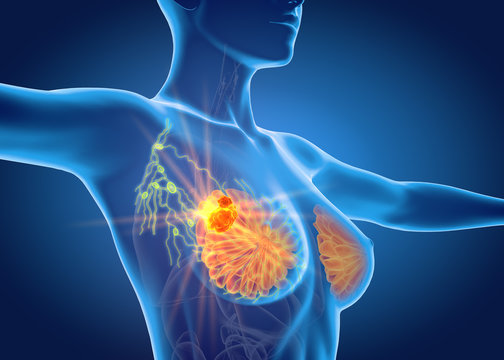BREAST CANCER
OUTLINE
- Introduction
- Risk factors
- Clinical features
- Diagnosis
- Treatment
- Prevention
INTRODUCTION
What is Cancer?
Breast cancer is simply the result of a mutation that occurs in genes that regulate cell growth with resultant disordered cell division and multiplication.
Also read: What Is Indemnity Insurance
When these mutative changes occur in the breast cells, it is termed breast cancer.
In breast cancer, the cells grow out of control.
There are different types of breast cancer and this depends on the cells involved. The breast is made up of 3 parts – (the for milk production), ducts (which transport produced milk to the nipples), and connective tissues.
Breast cancer is termed metastatic when it spreads to other parts of the body via blood or lymph vessels.
It can occur in both sexes but is more common in women.
RISK FACTORS
- Female gender.
- Increasing age.
- Positive family history.
- Positive personal history of breast conditions.
- Positive history of exposure to radiation especially to the chest.
- Obesity.
- Smoking and alcohol consumption.
- Early menarche and Late menopause.
- Nulliparous women (women that have never been pregnant)
- Post-menopausal hormone therapy.
CLINICAL FEATURES
Asymptomatic in the early stages in some cases. However, can present the following features;
- A lump/swelling in the breast or underarm(armpit)
- Changes in the size, shape, or appearance of one or both breasts.
- Inversion or distortion of the nipple.
- Bloody or clear nipple discharge.
- Redness or pitting of the skin over the breast.
- Breast Pain.
DIAGNOSIS
Breast cancer evaluation includes Clinical examinations, Imaging, and Needle biopsy.
PREVENTION
Early detection via screening remains the best preventive measure.
Screening modalities include;
- Regular self-breast examination.
- Clinical breast examination.
- Mammography.
- Ultrasonography.
- Magnetic resonance imaging.
General preventive measures include;
- Reduction in alcohol intake and tobacco use.
- Maintaining a healthy weight.
TREATMENT
This depends on the size and location of the tumor, lab findings, and the stage of the tumor.
Treatment options include;
- Surgery (lumpectomy or total mastectomy)
- Radiation therapy
- Adjuvant hormone or Chemotherapy.

